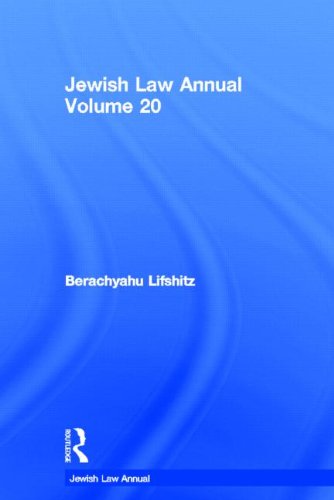

Most ebook files are in PDF format, so you can easily read them using various software such as Foxit Reader or directly on the Google Chrome browser.
Some ebook files are released by publishers in other formats such as .awz, .mobi, .epub, .fb2, etc. You may need to install specific software to read these formats on mobile/PC, such as Calibre.
Please read the tutorial at this link: https://ebookbell.com/faq
We offer FREE conversion to the popular formats you request; however, this may take some time. Therefore, right after payment, please email us, and we will try to provide the service as quickly as possible.
For some exceptional file formats or broken links (if any), please refrain from opening any disputes. Instead, email us first, and we will try to assist within a maximum of 6 hours.
EbookBell Team

5.0
20 reviewsVolume 20 of The Jewish Law Annual features six detailed studies. The first three articles consider questions which fall under the rubric of halakhic methodology. The final three articles address substantive questions regarding privacy, cohabitation and medical triage. All three ‘methodological’ articles discuss creative interpretation of legal sources. Two (Cohen and Gilat) consider the positive and forward-thinking aspects of such halakhic creativity. The third (Radzyner) examines tendentious invocation of new halakhic arguments to advance an extraneous interest. Cohen explores positive creativity and surveys the innovative midrashic exegeses of R. Meir Simha Hakohen of Dvinsk, demonstrating his willingness to base rulings intended for implementation on such exegesis. Gilat examines exegetical creativity as to the laws of capital offenses. Midrashic argumentation enables the rabbinical authorities to set aside the literal sense of the harsh biblical laws, and implement more suitable penological policies. On the other hand, Radzyner’s article on tendentious innovation focuses on a situation where novel arguments were advanced in the context of a power struggle, namely, Israeli rabbinical court efforts to preserve jurisdiction.
Two articles discuss contemporary dilemmas. Spira & Wainberg consider the hypothetical scenario of triage of an HIV vaccine, analyzing both the talmudic sources for resolving issues related to allocating scarce resources, and recent responsa. Warburg discusses the status of civil marriage and cohabitation vis-à-vis payment of spousal maintenance: can rabbinical courts order such payment? Schreiber’s article addresses the question of whether privacy is a core value in talmudic law: does it indeed uphold a ‘right to privacy,’ as recent scholars have claimed? The volume concludes with a review of Yuval Sinai’s Application of Jewish Law in the Israeli Courts (Hebrew).